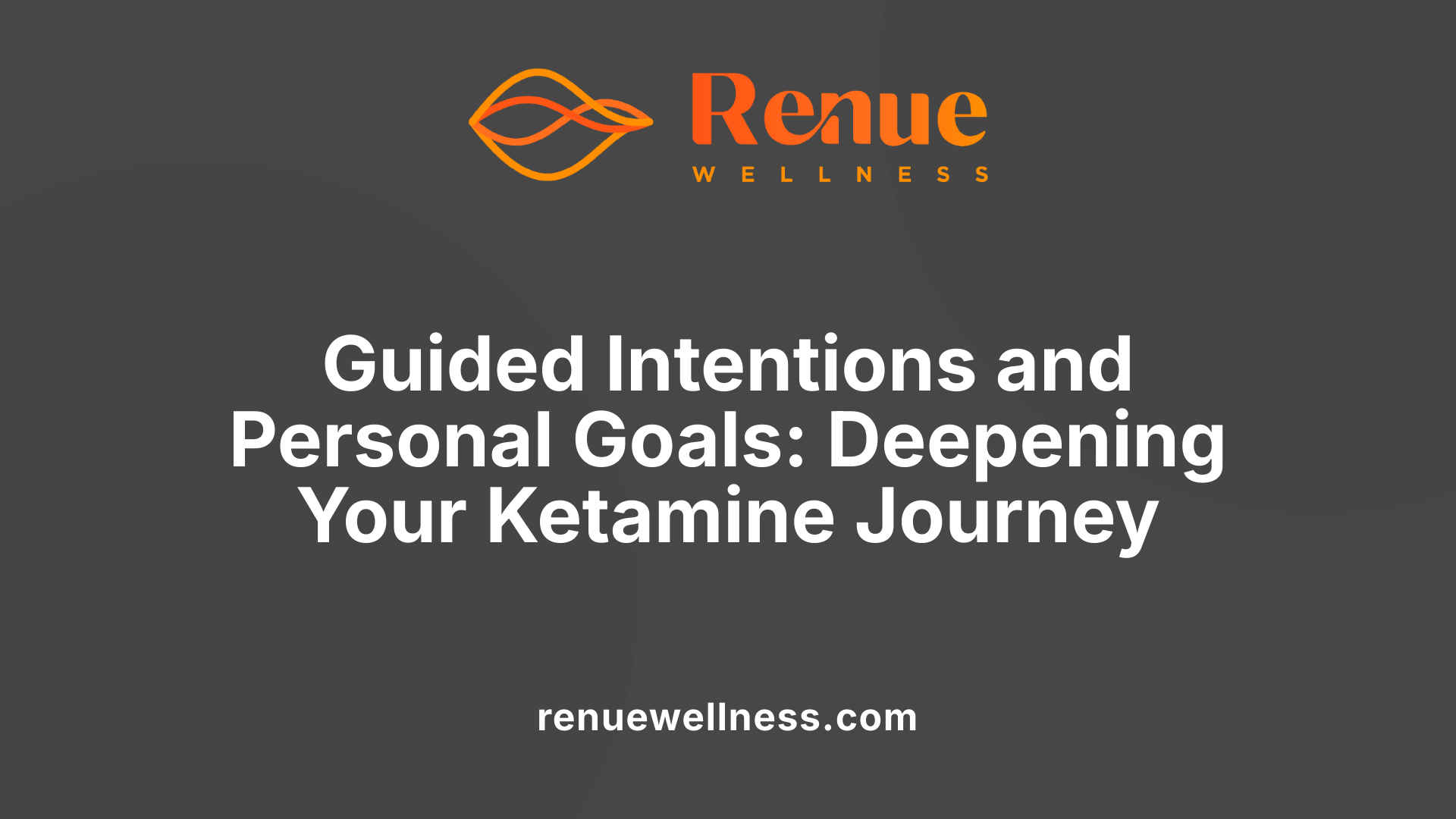Favorite Mantras Patients Use During Ketamine Sessions


July 28, 2025
Enhancing the Therapeutic Journey with Mindful Techniques and Mantras
Ketamine-assisted therapy offers a profound psychological experience, often marked by vivid visions, nostalgia, and emotional release. To maximize the benefits of these sessions, patients employ various mental techniques, including personalized mantras and structured intentions. These practices serve to anchor the mind, foster emotional resilience, and deepen the therapeutic process. This article explores the favorite mantras and mental techniques patients use, their role in enhancing comfort and focus, and guidance for selecting meaningful affirmations to support a transformative journey.
The Psychological Landscape of Ketamine Experiences

What are the psychedelic qualities of ketamine, including visions and emotional responses?
Many patients describe ketamine's effects as soothing and enjoyable, often featuring dream-like visions such as colorful vistas, swirling shapes, or a sensation of floating. These visual hallucinations can evoke strong emotional responses, including memories or visions of past loved ones. During these episodes, individuals may experience a range of feelings like laughter or tears, highlighting the emotional depth of the experience.
Dissociation and out-of-body sensations and their relation to therapy outcomes
While most patients report dissociation or out-of-body sensations during ketamine infusions, these experiences are not strictly necessary for successful treatment outcomes. Dissociation can include feeling detached from one's body or surroundings, but many recognize that the therapeutic benefits, such as emotional relief and insight, can occur even without profound dissociative episodes.
Duration and peak intensity of effects
The infusions typically last about forty minutes, with the most intense phase — the peak experience — lasting around fifteen minutes. During this peak, patients often report vivid visions, strong emotions, and an altered sense of self or reality, which can facilitate deep psychological work.
How support tools and mental techniques enhance the experience
Patients are guided through their sessions with eyeshades, noise-canceling headphones, curated playlists, and the presence of supportive clinicians. Such sensory inputs create a safe environment, reducing anxiety and helping focus attention inward. Employing grounding techniques like mindfulness, breath work, or visualization before and during sessions can help manage intense emotions or sensations, fostering stability.
The role of intention setting in therapy
Setting clear intentions prior to the infusion can significantly shape the experience. These intentions clarify personal goals, whether exploring childhood, understanding emotions like anxiety, or fostering self-awareness. Writing in journals, meditating, or mentally rehearsing these goals helps participants approach the session with purpose and openness.
Examples of intentions and affirmations
Intentions might include a desire to explore past trauma, cultivate inner peace, or deepen spiritual connections. Affirmations such as "You are safe," "Trust yourself," and "I am here to hold space for you" serve as mental anchors, reinforcing safety and trust during the experience.
Preparation and post-session practices
To maximize benefits, patients are advised to sleep well, stay hydrated (but stop fluids six hours before), and avoid food and substances like caffeine or alcohol for at least four hours prior. Setting intentions through meditation or journaling beforehand primes the mind. Afterward, resting, journaling, and engaging in follow-up psychotherapy support integration, making the psychological gains more enduring.
The influence of music and mental practices
Music without lyrics, such as ambient or binaural tracks, can enhance emotional processing, relax the mind, and reduce anxiety. Combining music with mental strategies like affirmations helps maintain focus, encourages insights, and provides comfort during potentially challenging moments.
Guidance for choosing effective mantras and intentions
When selecting mantras, focus on phrase simplicity, relevance, and positivity. Reflect on personal values and goals to craft affirmations that resonate deeply. Practicing these mentally before sessions, along with visualization and grounding techniques, can strengthen their impact, guiding the experience toward healing and growth.
Examples of positive affirmations and intentions
Common affirmations include 'You are safe,' 'Trust your process,' and 'I am open to healing.' Intentions should be personalized, such as aiming for emotional clarity, confronting fears, or fostering spiritual growth. Collaborating with a licensed therapist helps tailor these directions for maximum effect.
How preparation influences therapy quality
Pre-session measures like good sleep, a clean diet, hydration, and mindfulness create optimal conditions for ketamine therapy. Avoiding stimulants and heavy foods reduces physical discomfort and potential interference. These steps foster mental clarity and emotional receptivity, enhancing the likelihood of meaningful insights.
Supporting long-term growth after sessions
Post-session, patients benefit from rest, reflective journaling, and ongoing therapy, which help process and integrate insights. Practicing mindfulness, maintaining healthy routines, and seeking continued support reinforce emotional resilience and facilitate sustained progress.
By thoughtfully preparing, setting meaningful intentions, and engaging in post-session reflection, patients can harness the full potential of ketamine therapy, unlocking profound psychological benefits and ongoing personal growth.
Creating a Supportive Mental Environment: The Power of Intentions and Affirmations

What guidance can help in choosing or creating effective mantras and intentions for ketamine therapy?
Selecting meaningful mantras and intentions is a crucial step in preparing for ketamine therapy. Reflect on your personal values, goals, and areas where you seek growth or healing. Craft phrases that are positive, present-tense, and evoke feelings of safety, trust, or openness. For example, affirmations like 'I am safe,' 'I trust this process,' or 'I am open to healing' serve as mental anchors during the experience.
Keep your mantras simple and memorable to facilitate quick recall during moments of altered perception. Prior to the session, consider journaling your intentions—such as exploring emotional depths, releasing stress, or seeking clarity—to give your experience a clear focus. Incorporate mindfulness or grounding techniques during preparation to reinforce these intentions and set a receptive, calm mindset. Such thoughtful preparation increases the likelihood of a meaningful and therapeutic experience.
How do personal and guided intentions influence the progress and depth of the ketamine experience?
Intentions function as purposeful guides that shape the quality and direction of the ketamine journey. Personal intentions—specific goals like fostering serenity, understanding trauma, or gaining insight—help focus attention inward and promote targeted exploration.
When working with a therapist, guided intentions offer a structured framework, adding depth to the emotional and psychological work. Personalized intentions tend to resonate more deeply, increasing engagement and motivation. They often encourage openness to unexpected insights, fostering profound personal breakthroughs.
Clear, well-formulated intentions can also support long-term growth by anchoring experiences and insights into daily life. The flexibility to modify or expand intentions during the session allows for organic shifts, which often lead to more meaningful and transformative outcomes.
In what ways does mental preparation prior to ketamine sessions impact patient outcomes?
Mental readiness is a vital factor influencing the success of ketamine therapy. Engaging in practices like meditation, journaling, and intention setting helps clarify your goals and reduces pre-session anxiety.
Creating a comfortable physical environment—using items such as noise-canceling headphones, eye masks, and comfortable clothing—helps foster relaxation and physical ease. Ensuring adequate sleep and hydration prior to the session enhances mental clarity and physical stability, minimizing discomfort.
Such comprehensive mental and physical preparation primes your mind to be receptive to insights, promotes trust in the process, and helps manage challenging sensations or emotions that may arise. Consequently, thorough preparation contributes to deeper, more insightful experiences and better therapeutic outcomes.
What are effective techniques for integrating post-session insights into ongoing therapy and personal growth?
Post-session integration is essential to maximize the benefits of ketamine therapy. Journaling immediately after the session captures emotions, thoughts, and revelations, providing a record for reflection.
Scheduling follow-up therapy helps process and contextualize insights within a supportive environment. Techniques like mindfulness meditation and visualization reinforce new perspectives and promote emotional stability.
Continuing practices such as daily grounding exercises, affirmations, or creative expression solidify insights and support ongoing growth. Cultivating a safe, trusting environment with supportive relationships encourages vulnerability and facilitates long-term change.
Altogether, these techniques help translate profound experiences into lasting personal development, fostering resilience and emotional healing.
Empowering Your Healing Journey with Mindful Practice
Incorporating carefully chosen mantras, positive affirmations, and grounding techniques into ketamine-assisted therapy can significantly enhance the experience. Personalizing intentions, preparing mindfully, and engaging in post-session reflection foster deeper insights and sustained emotional well-being. As research underscores the importance of mental focus and emotional anchors, patients are encouraged to work closely with therapists to develop meaningful mental techniques. When thoughtfully applied, these practices not only improve comfort and focus during sessions but also support long-lasting psychological growth and healing, empowering individuals to navigate their healing journey with confidence and clarity.
References
- Preparing for IV Ketamine Therapy
- Intention Setting Examples for Ketamine Therapy - Innerwell
- How to Prepare for Your Ketamine Infusion: Tips for a Calm and ...
- Setting Intentions for Ketamine Therapy: Sarah's Story ... - Isha Health
- 5 Recommendations to Patients Planning On Ketamine Infusions
- The Science of Music, Entrainment, and Ketamine Treatments
- Exploring the impact of music on response to ketamine/esketamine
- The Power of Integration Therapy in Ketamine Treatment
- Ketamine for the treatment of mental health and substance use ...
- Enhancing Ketamine Therapy with Grounding Techniques
Recent Posts
Conditions Treated
AnxietyDepressionOCDPTSDPostpartum DepressionPain ManagementSubstance AbuseSuicidal IdeationOur Location


